#Kauaʻi
Text

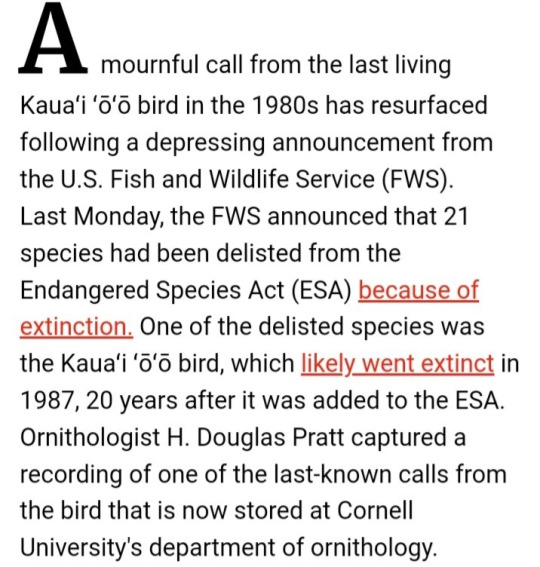

This was quite haunting to read.
#animals#birds#Kauaʻi ʻōʻō#Kauaʻi#hawaii#hawai'i#extinction#extinct animals#extinct species#news#science#zoology#biology#Endangered Species Act#ESA#recently extinct#Putting a bunch of tags in this because I really want this story to be known. It made me so sad.
438 notes
·
View notes
Text




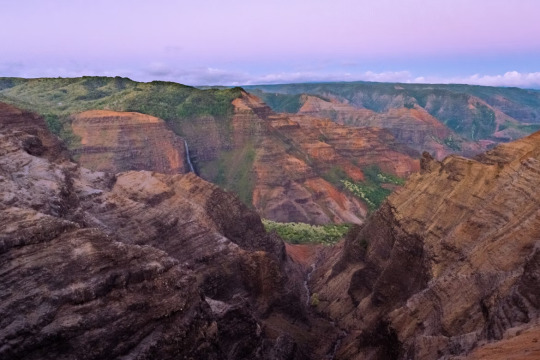
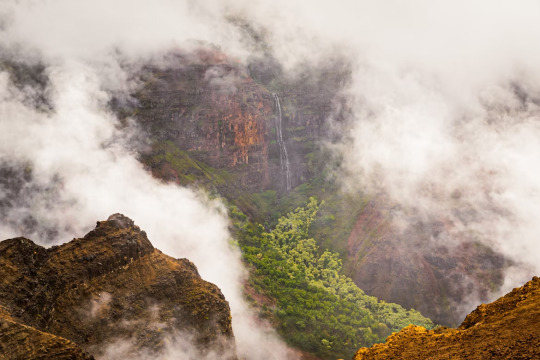

Waimea Canyon State Park, Kauaʻi, Hawaii, USA
Benjamin R.
#Waimea Canyon#Kauaʻi#Hawaii#USA#HINature#Canyon#US#United States#United States of America#North America#Waimea Canyon State Park#State Park
0 notes
Video
youtube
The Kauaʻi ʻōʻō or ʻōʻōʻāʻā was the last member of the ʻōʻō genus within the Mohoidae family of birds from the islands of Hawaiʻi. The entire family is now extinct. It was previously regarded as a member of the Australo-Pacific honeyeaters. The bird was endemic to the island of Kauaʻi.
12 notes
·
View notes
Text

Meet the Kauaʻi ʻōʻō, the fourth and final creature in my extinction series!
This cute little hawaiian bird disappeared in the 1980s thanks to habitat loss and the introduction of invasive animals such as rats and pigs.
For me, personally, their story hits especially hard thanks to a super heartbreaking audio clip of the last living bird singing a courtship song, calling out to his mate. He of course gets no response. At the time of recording he was presumed to be the last of his species, and his mate was almost certainly dead as she hadn't been seen in years.
:(
You can hear the recording in the video below. But if you're already feeling a little blue, uh... Maybe save it for later or something because OOF.
youtube
#digital art#my art#art#artists on tumblr#digital painting#animal art#extinction#kauai oo#Kauaʻi ʻōʻō#conservation#bird art#birds#Youtube
123 notes
·
View notes
Text
The last song | La última canción | A última canção
youtube
English
Moho braccatus, known as ʻōʻō de Kaua was an endemic bird to the island of Kauaʻi officially extinct in the 20th century. Its extinction was a combination of several factors, such as mosquito-transmitted disease, introduction of mammalian predators such as the small Indian mongoose or Polynesian rat, and the destruction of its habitat, making the species more vulnerable to catastrophic weather events.
A male was last heard in 1987, the audio from this video. The images are from 1985, when he was last seen.
The silences between songs are meant for the female to fill with her singing, since during the mating season they form a duet.
Dr. Christopher W. Clark : The last male of a species, singing for a female who will never come. And now his voice is gone.
Not only is the species extinct, but the whole genus was swiped away within the last male.
/
Español
Moho braccatus fue un pájaro endémico de la isla Hawwaiana Kaua’i, extinguido oficialmente en el siglo 20. Su extinción fue una combinación de varios factores, como las enfermedades transmitidas por mosquitos, introducción de mamíferos depredadores como la rata de la Polinesia y el meloncillo chico, y la destrucción de su hábitat, acentuando la debilidad de la especie a catástrofes naturales.
El último macho fue escuchado por última vez en 1987, es el audio de este vídeo. Las imágenes son de 1985, cuando fue visto por última vez.
Los silencios entre cada canto están destinados a que la hembra cante su parte, ya que forman un dueto durante el cortejo.
Dr. Christopher W. Clark dijo: El último macho de la especie canta por una hembra que nunca llegará. Y ahora su voz ha desaparecido.
No sólo ha supuesto la extinción de la especie, sino que todo el género desapareció junto con este macho.
/
Português
Moho braccatus era uma ave endêmica da ilha havaiana de Kaua'i, oficialmente extinta no século 20. Sua extinção foi uma combinação de vários fatores, incluindo doenças transmitidas por mosquitos, introdução de mamíferos predadores como o rato polinésio e a mangusto, e a destruição de seu habitat, acentuando a fragilidade da espécie às catástrofes naturais.
O último macho foi ouvido pela última vez em 1987, é o áudio deste vídeo. As imagens são de 1985, quando ele foi visto pela última vez.
Os silêncios entre cada cantoria servem para que a fêmea cante sua parte, pois formam um dueto durante o ritual de acasalamento.
Dr. Christopher W. Clark disse: O último macho da espécie canta para uma fêmea que nunca virá. E agora sua voz desapareceu.
Não só levou à extinção da espécie, mas todo o gênero desapareceu junto com este macho.
|
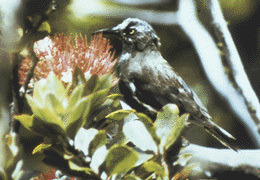
50 notes
·
View notes
Text
can you hear me?
“can you hear me?” i say, much like the little bird in the little board book who asks “are you my mother?” can you hear me? can you hear me?
i walk up to everyone i’ve ever known and loved. is this any better? can you hear me? they softly mimic many sounds back to me in return but not in a way i can understand, not in a way that makes me feel known and loved.
i wait and i wander aimlessly. can you hear me? i learned to take flight on my own haven’t i? can you hear me? why do i cry? can you hear me?
my love? i’m sure i have one. i think i’m meant to.
can you hear me? can you hear me? can you hear me? can you hear me? can you hear me?
“there isn’t another like me who hears me at the end of my little board book is there?” chirped the kauaʻi ʻōʻō bird hoarsely.
can you hear me?
#a little poem i wrote in ode to the Kauaʻi ʻōʻō#rest softly now little one and may you take flight to a place where your call is returned to you#and for what’s it’s worth i heard your last song and i thought it was lovely#i hope you know how beautiful you were#can you hear me?#my writing#kaia’s thoughts#words#poetry#kauaʻi ʻōʻō
5 notes
·
View notes
Text
me, angrily stirring applesauce into my cookie dough because i won't pay six dollars for a carton of eggs: I DON'T DESERVE THIS WHEN I WOULD BE SO GOOD AT RAISING CHICKENS.
#>:(((((#kauaʻi is the island of CHICKENS how could you DO ME LIKE THIS universe?????#every time i pass the feed store where the chicks are currently on sale bc its season i feel my heart shrink two sizes#something something inflated egg prices will be my (super-saiyan evolved????) villain story
3 notes
·
View notes
Text
Bawling because I just finished watching The Nightingale, which is a good movie but absolutely brutal.
Only a few minutes into the film I instantly recognized a sound in the forest. The sound was the call of the Kauaʻi ʻōʻō a now extinct bird that was eradicated by introduced predators.
However, the bird is native to Hawaii, and the movie is set in Tasmania. So why would the movie use the call of a Hawaiian bird, and not a native one?
Because the recording was of the last male of its kind, and it was calling for a female which would never come, and that made me bawl harder.
4 notes
·
View notes
Text
Save the last vaquita by clicking this link and stop illegal fishing!
Let's save them before they disappeared!!!!!
#save the vaquita#save the wilds#save the animals#stop illegal hunting!#bring back the kauaʻi ʻōʻō!#bring back extinct animals!#research for extinct animals!#research the kauaʻi ʻōʻō!#save vaquita!!!!!!
2 notes
·
View notes
Text
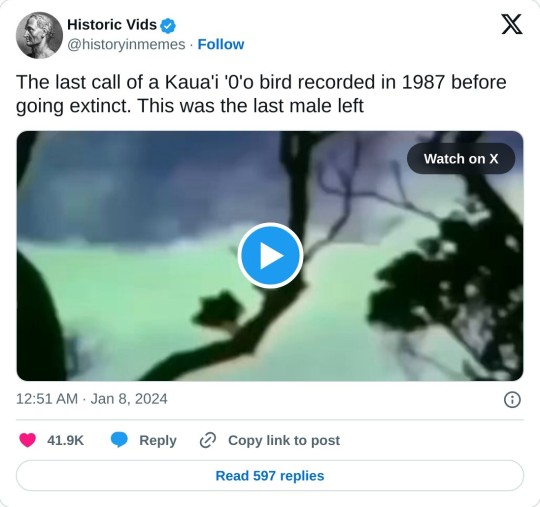
youtube
1 note
·
View note
Text
Kauaʻi ʻōʻō
Our extinction project continues, with a song and video for the beautiful Kauaʻi ʻōʻō. For background on this little project, you can read the first post here.
youtube
View On WordPress
0 notes
Text
So, I saw a post circulating here about the “extinction of birds in 2023“, with this picture attached
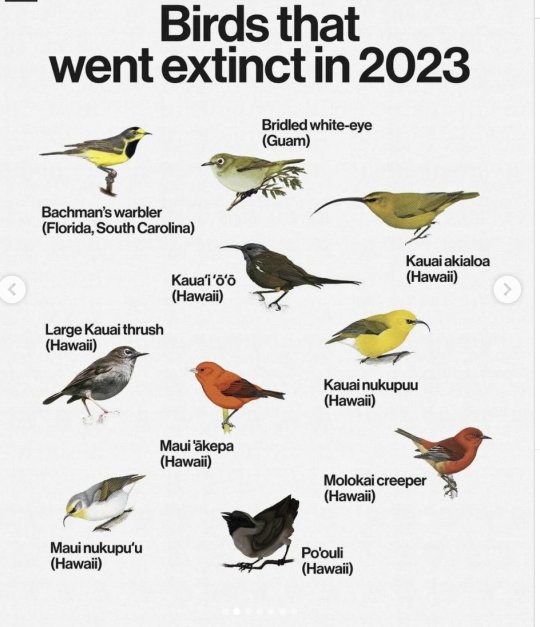
My, what a bold claim! All these poor birdies, “went extinct” in just one year alone? Why would such an outrageous, depressing and catchy claim be spread around?
Let’s fact check it.
All the species listed, Bachman’s wabler (Vermivora bachmanii, 1988 or 1980s), Kāmaʻo or large Kauaʻi thrush (Myadestes myadestinus, 1989 or 1987), Bridled white-eye (Zosterops conspicillatus, 1983 and 1983), Kauai ʻakialoa (Akialoa stejnegeri, 1969 or 1960s), Kauaʻi ʻōʻō (Moho braccatus, 1987 and 1987), Kauaʻi nukupuʻu (Hemignathus hanapepe, 1899 and 1899), Maui ʻakepa (Loxops ochraceus, 1988 and 1988), Kākāwahie or Molokaʻi creeper (Paroreomyza flammea, 1963 and 1963), Maui nukupuʻu (Hemignathus affinis, 1896* and 1996 ) and Poʻouli (Melamprosops phaeosoma, 2004 and 2004) are all, indeed, either extinct or possibly extinct, according to IUCN Red List of Threatened Species and U.S. Fish and Wildlife Service.
What are the dates after the scientific names? Well, those all are *last sightings* per IUCN Red List and USFWS accordingly. So, these birds were not seen for DECADES and in one case FOR MORE THAN A GODDAMN CENTURY. And sure as hell there is NO information about them very suddenly being gone all last year.
What’s the deal then? Where did this claim even come from? Well, likely from this article "21 Species Delisted from the Endangered Species Act due to Extinction" from U.S. Fish & Wildlife Service. It includes all the birds in the picture (with the last date of sight, listed above).
From the article: “The U.S. Fish and Wildlife Service is delisting 21 species from the Endangered Species Act due to extinction. Based on rigorous reviews of the best available science for each of these species, the Service determined these species are extinct and should be removed from the list of species protected under the ESA. Most of these species were listed under the ESA in the 1970s and 80s and were in very low numbers or likely already extinct at the time of listing.”
They didn’t ALL fucking suddenly drop dead all in the same year – if they did, as some other people have already pointed out, there would be an uproar EVERYWHERE. Ornithologists alone would not let it live down. They were officially delisted from endangered status by U.S. Fish & Wildlife Service that year, there was a proposition to do so back in 2021, too. Some were already declared extinct before by IUCN.
Despite not being seen for so long, they remained on the list of critically endangered for a long while, cause you cannot just immediately declare a species extinct. There’s no RTS unit amount number that goes to 0 once there’s nothing left; people keep checking for them over and over and over again. Sometimes it turns out that a species previously thought to be extinct is actually still out there. Attenborough's long-beaked echidna for example was last sighted SIXTY YEARS ago before being sighted again in 2023. It was thought to be extinct for a while, before 2007, when signs of its activity was spotted again. More often than not though, a species turns out to be actually very extinct, unfortunately – like in this case.
I cannot possibly know if the creators of this picture, or people that spread it on social media ever had good intentions behind it for awareness, however even if they did, it turned out to be nothing but very blatant misinformation, with a fearmongering effect. The only thing this achieves is not awareness of habitat destruction or pernicious tourist influence or climate change or what have you – the only thing this achieves is despair and panic. People already so casually fall into complete doomerism, they’re very used to hear bad news. And guess what doomerists do? Typically nothing. It renders people helpless. It’s not gonna make people get up and be ready for action, it, at best, would just make people feel sad and/or angry, or at worst, feed into the current alarming rise of ecofascism. NOTHING good comes out of this. At the very goddamn least, no one needs to lie to promote a goal.
The aim of the USFWS article, on the other hand, IS to make people aware about those animals that are already gone from the face of the planet, no matter how long ago, and that now we have to protect those animals that are critically endangered and still out there – to not have to repeat those tragedies.
Be very critical of what you see on the internet, especially if it’s sited with no sources. Especially-especially if it causes a strong emotional reaction. Lies and misinfo could only hurt the cause, no matter how noble. And please, be aware of your local wildlife status. Check in with it accoding to trusted sources.
[*sic, possibly a typo and it was meant to be 1996, other confirmed date listed there is 1989]
Addendum: I could not for sure find the uncredided (who woulda thunken that ppl that don't cite their sources would also not credit the artists) author(s) of the bird illustrations. If someone finds them, please, let me know!
Edit: Huge thanks to moosefinch for finding the sources for the artwork! I'll add their contribution below:
"Image sources!
The Kauai ʻakialoa, Kauaʻi ʻōʻō, Maui ʻakepa and Kauaʻi nukupuʻu are from Birds of the World.
The "Maui nukupuʻu" and "Molokaʻi creeper" illustrations are also Birds of the World, but are actually a female Kauaʻi nukupuʻu (the other being the male) and Laysan honeycreeper/Laysan ʻapapane respectively.
The bridled white-eye is by Lauren Helton according to this source.
Bachman's warbler is by Lynn Hawkinson Smith/smithhouse2 according to this Etsy listing.
The Poʻouli is by Christina Czajkowski."
#ah I just now see that the tumblr reblog of the pic and the twitter thread attached was deleted#yet the post is still in circulation. The damage lingers#so fucking irresponsible#fact check#misinformation#birds#bird#ecology#environmentalism#extinction#conservation#species conservation#animals#hawaiʻi#important
807 notes
·
View notes
Text

Day 4 of January extinct birds - the black mamo (top, also known by other names) and the kauaʻi ʻōʻō (bottom)
Two birds! The hawaiian honeyeaters are the only entire family of birds to go extinct in recent times, and the kauaʻi ʻōʻō is the last (1987) and most famous. The song of the last male was recorded two years after the last female was estimated to have died. Other members of the family have unique striking plumage that the kauaʻi ʻōʻō doesn't, which might sadly be part of why it was able to persist for longer.
I also wanted to add in the black mamo to represent the hawaiian honeycreepers (not the same as honeyeaters!). These birds are similar to darwin's finches in the galapagos where their crazy beak shapes went through drastic evolution. Yes, the honeycreepers are finches! While some species are classified as least concern, most of the honeycreepers are extinct or critically endangered. Hopefully the extinction of the honeyeaters encourages people to focus their attention on the honeycreepers too so they don't suffer the same fate.
sorry for such a sad post! Island birds have really suffered the last few centuries :c
#bird of the day#birds? of the day#bird art#extinct animals#birds#digital illustration#illustration#extinct birds#recently extinct#daily art#passeriformes
551 notes
·
View notes
Text
thinking about extinct birds so much
thinking about the passenger pigeon, martha, and carolina parakeet, inca, the last presumed members of their species dying only a few years apart in the same enclosure at cincinnati zoo
thinking about the last kauaʻi ʻōʻō, calling out their part of a duet with no one left to return it
thinking of the last breeding pair of great auks, who were killed by fisherman. clumsy on land, they ran to the sea to escape. their carcasses were sold on the mainland, and their single egg accidentally crushed underfoot in the chase
thinking of the last heath hen, booming ben, last seen on his lekking grounds, standing alone with no one to display to or compete with
thinking of the last dusky seaside sparrow, orange band, dying alone of old age on a nature preserve
thinking of all the birds that went quietly, without us noticing.
624 notes
·
View notes
Text
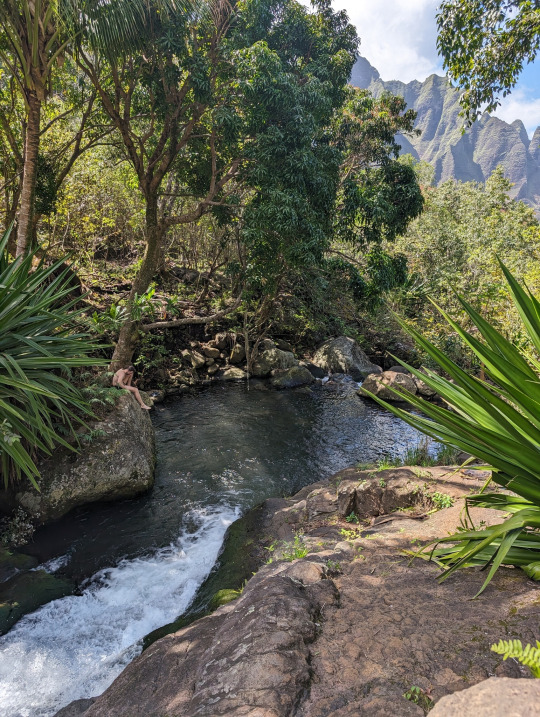
Kalalau Trail along the Nā Pali Coast of Kauaʻi , Hawaiʻi
80 notes
·
View notes
Photo


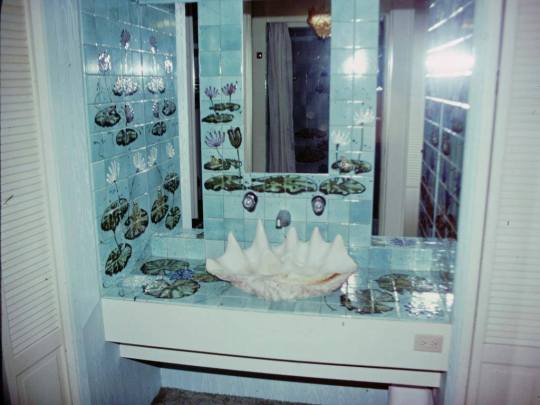
A room at the Coco Palms Resort, Kauaʻi, Hawaii Source
289 notes
·
View notes